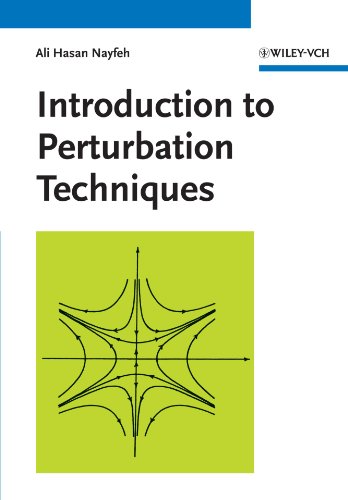Introduction to perturbation techniques book
Par jose charles le mercredi, septembre 14 2016, 08:16 - Lien permanent
Introduction to perturbation techniques by Ali H. Nayfeh


Introduction to perturbation techniques Ali H. Nayfeh ebook
Format: pdf
Publisher: Wiley-VCH
ISBN: 0471310131, 9780471310136
Page: 532
The generalized In this case, in order to analyze the behavior of the system, one usually resorts to numerical integration techniques, such as the Runge-Kutta method [8], or perturbation techniques [9]. The classical two-dimensional Lotka-Volterra equation is given bySystem (1.1) has been one of the most studied models for a two-dimensional dynamical system. Introduction to Real Analysis – J. There Will Always be a Gulf Stream — An Exercise in Singular Perturbation Technique. Demonstrating the application of similar techniques in quantum and classical mechanics, Introduction to Perturbation Theory in Quantum Mechanics reveals the underlying mathematics in seemingly different problems. Life is a non-dynamic process, even chaotic. It is expected the students are familiar with this mathematical tool in this course and they can apply different methods to solve a regular or singular perturbation equation. But I think that these processes can be modeled properly by using our mind and mathematics. Analytical predictions based on perturbation analysis show that a delayed hysteretic suspension enhances vibration isolation comparing to the case where the nonlinear damping is delay-independent. Holmes (Springer, 2013) WW.pdf. The simplest model of predator-prey interactions was developed independently by Lotka [1] and Volterra [2]. Introduction to Perturbation Methods 2nd ed. Various strategies for reducing transmitted vibrations have been proposed; see, for instance, [1–5] and references therein. Introduction to General Topology – K. Joshi (Wiley Eastern Ltd., 1983) WW.djvu. Kelvin' s theorem, vortex dynamics; potential flows, flows with high-low Reynolds numbers; boundary layers, introduction to singular perturbation techniques; water waves; linear instability theory.